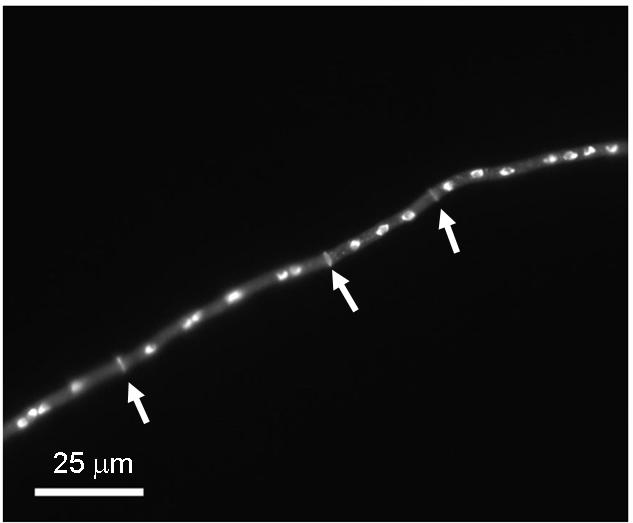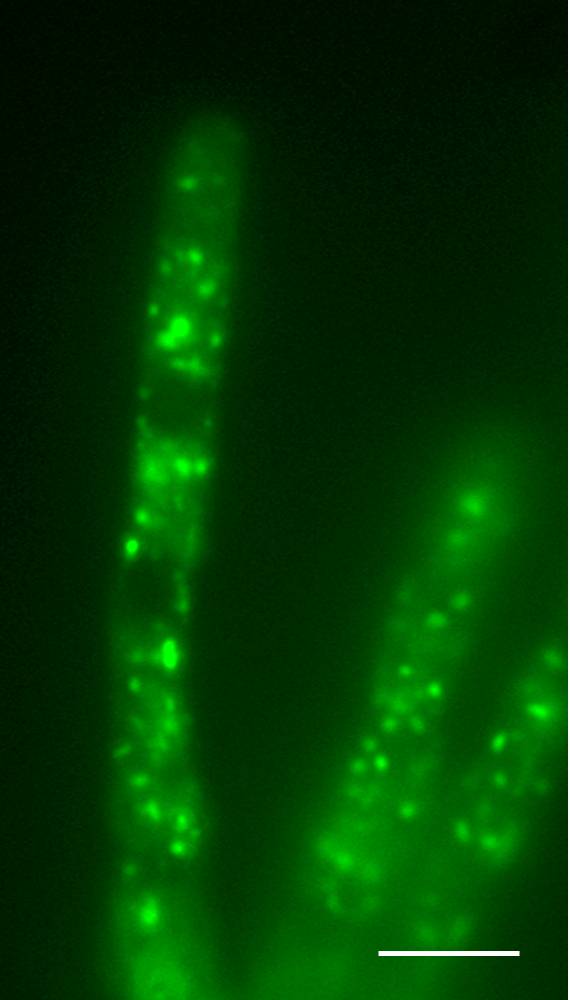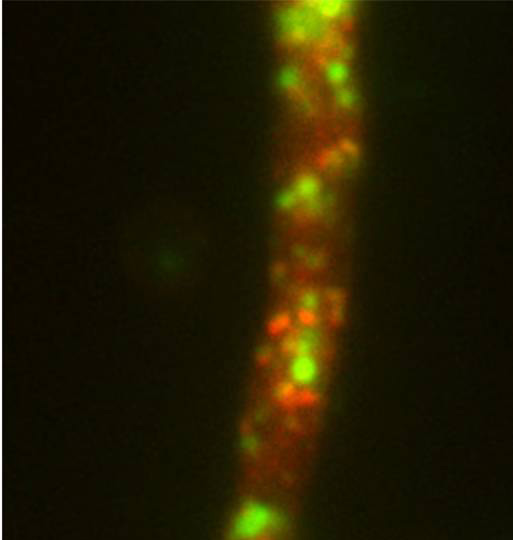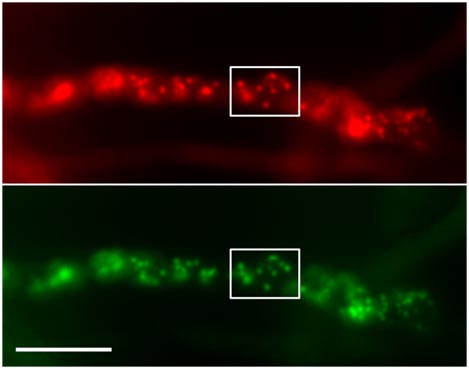

The calI11 mutant strain is characterized by irregular hyphal diameter, shortened hyphal compartments (septum-to-septum distance), and an increased density of hyphal branches, in addition to CFW-hypersensitivity.
 |
 |
White arrows indicate selected crosswalls (septa). Note that the mutant (on the left) has a much shorter interseptal distance than does the wild type (on the right). Branching in the mutant is much denser than in the wild type. | |
|---|---|
All of these characteristics are complemented by addition of wild type copies of the gene encoding A. nidulans GmtA. The mutated site in the calI11 strain occurs in GmtA (Jackson-Hayes et al., 2008).
 |
A GmtA::GFP chimera localizes to cytoplasmic punctae, indistinguishable from structures identified in other work as being fungal Golgi apparatus equivalents.
Interestingly, structures that bear GmtA do not significantly overlap with similar punctae to which the separate Golgi protein CopA (coatomer I) localizes, suggesting that that Golgi cisternae of filamentous fungi undergo a process of differentiation. We interpret GmtA-containing cisternae to be "cis-like", while CopA-containing cisternae are "trans-like", being engaged in forming vesicles of retrograde intra-Golgi transport.
 |
 |
In both hyphae, GmtA is shown in the green fluorescence channel. The hypha on the right also expresses an mRFP-labeled CopA. Bars = 5 mm. | |
|---|---|
 |
 |
In the left image, transcript levels of GmtA are shown with solid symbols, while transcript levels of GmtB are shown with open symbols. In the right-hand image, GmtA is shown in the green fluorescence channel, while GmtB is shown in red. Bar = 5 mm. | |
|---|---|
Literature:
Jackson-Hayes, L., T. W. Hill, D. M. Loprete, L. M. Fay, B. S. Gordon, S. A. Nkashama, R. K. Patel, and C. V. Sartain. 2008. "Two GDP-mannose transporters contribute to hyphal form and cell wall integrity in Aspergillus nidulans." Microbiology 154: 2037-2047.
Jackson-Hayes, L., T. W. Hill, D. M. Loprete, B. S. Gordon, C. J. Groover, L. R. Johnson, and S. A. Martin. 2009. "GDP-mannose transporter paralogues play distinct roles in Aspergillus nidulans cell wall integrity." In Press Mycologia.

